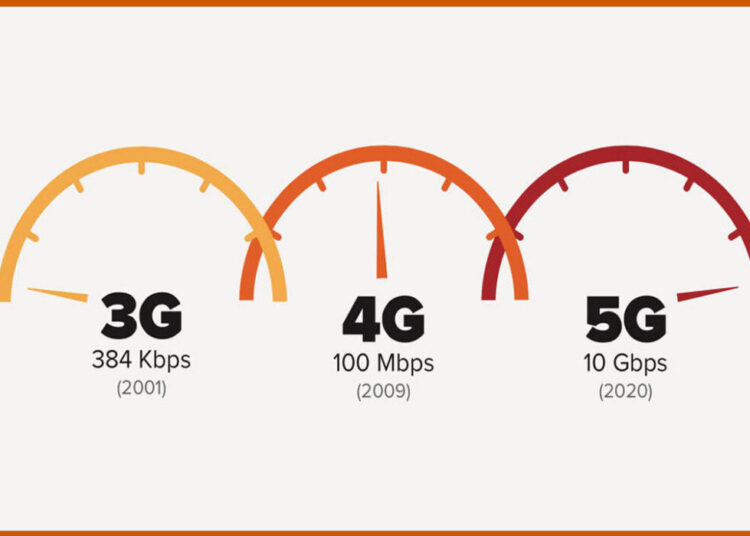Introduction: The Dawn of a New Era in Connectivity
The introduction of 5G technology marks a monumental leap in wireless communication, promising to reshape not just how we use our mobile devices but also how entire industries operate. As the fifth generation of cellular network technology, 5G is not merely an incremental upgrade over its predecessor, 4G LTE. Instead, it represents a fundamental shift in network capabilities, delivering unprecedented speeds, ultra-low latency, and the capacity to connect a massive number of devices simultaneously. This article delves into the profound impact of 5G, exploring the core technologies that enable its extraordinary performance and the transformative applications that will define the future of our digital world.
For years, we’ve relied on 4G networks for high-speed internet on the go, enabling services like video streaming, mobile gaming, and social media. However, the ever-increasing demand for data-intensive applications and the proliferation of connected devices have pushed 4G to its limits. This is where 5G steps in, designed from the ground up to handle the “data tsunami” of the twenty-first century. It’s a technology built to support a world where everything from cars and home appliances to industrial robots and city infrastructure is interconnected, creating a truly intelligent and responsive digital ecosystem. The potential of 5G goes far beyond faster downloads; it is the foundation for a future where seamless, real-time connectivity is a given, unlocking innovations that were previously confined to science fiction.
The Core Pillars of 5G Technology
Understanding what makes 5G so revolutionary requires a look at the key technological advancements that underpin it. Unlike 4G, which uses a single broad spectrum, 5G operates across a wider range of frequencies, each with its own unique characteristics.
A. Millimeter Wave (mmWave): This is the highest frequency band used by 5G, operating in the 24 GHz to 100 GHz range. . mmWave provides the fastest speeds, often measured in gigabits per second. Its short range and susceptibility to physical obstructions (like buildings and trees) mean it is best suited for dense urban areas, stadiums, and other locations with high user density. This high-speed “hotspot” connectivity is crucial for applications that require massive bandwidth, such as real-time 8K video streaming and virtual reality (VR) experiences.
B. Mid-band (C-band): Operating in the 2.5 GHz to 6 GHz range, mid-band 5G offers a balance between speed and coverage. It’s the most common type of 5G deployed today, providing speeds significantly faster than 4G LTE with a wider reach than mmWave. This is the “sweet spot” for most everyday use cases, including high-definition video calls, cloud gaming, and general web browsing. Its ability to penetrate buildings better than mmWave makes it ideal for broad urban and suburban coverage.
C. Low-band (Sub-6 GHz): This band operates at frequencies below 1 GHz and is the primary range for cellular service today (4G LTE). Low-band 5G provides the widest coverage, reaching rural areas and penetrating buildings most effectively. While its speeds are more comparable to high-end 4G LTE, it is crucial for building a reliable, nationwide 5G network, ensuring connectivity for applications that don’t require immense speed but need consistency, such as smart home devices and IoT sensors.
The strategic combination of these three frequency bands—often referred to as a “layered approach”—is what allows 5G to deliver on its promises of speed, latency, and capacity. By intelligently switching between these bands, a 5G network can provide the optimal connection for any given application or location.
Ultra-Low Latency and Massive Device Connectivity
Beyond raw speed, two other characteristics of 5G are equally transformative: ultra-low latency and massive machine-type communications (mMTC).
A. Ultra-Low Latency: Latency refers to the time it takes for a data packet to travel from its source to its destination. While 4G networks have a typical latency of 50-100 milliseconds, 5G can reduce this to as low as 1 millisecond. This near-instantaneous response time is a game-changer for applications that require real-time feedback, such as remote surgery, autonomous vehicles, and industrial automation. For a self-driving car, a millisecond delay could be the difference between a safe stop and a collision. Low latency will unlock a new wave of services that rely on real-time data processing and decision-making.
B. Massive Machine-Type Communications (mMTC): The Internet of Things (IoT) is connecting billions of devices, from smart watches to smart grids. 5G is designed to support this massive expansion. A single 5G cell can connect over a million devices per square kilometer, a massive increase over 4G’s capacity. This capability is essential for smart cities, where countless sensors monitor everything from traffic flow to air quality, and for industrial IoT, where thousands of machines communicate with each other in a factory setting. .
This ability to handle a high density of devices without performance degradation is what allows 5G to act as the backbone for the fully connected world envisioned in the future.
Transforming Industries: The Real-World Impact of 5G
The true value of 5G lies not just in its specifications but in its ability to enable new applications and revolutionize existing industries.
A. Smart Cities: 5G will be the nervous system of smart cities. It will enable real-time traffic management, smart streetlights that adjust based on pedestrian and vehicle flow, and automated waste management. The low latency and high capacity will allow city officials to gather and analyze data from a vast network of sensors, leading to more efficient, sustainable, and safer urban environments.
B. Autonomous Vehicles: Self-driving cars require constant, real-time communication with each other and with infrastructure. 5G’s low latency allows vehicles to communicate with each other in a fraction of a second, enabling cooperative driving and collision avoidance. It also facilitates communication with traffic signals, road sensors, and cloud services, making autonomous driving safer and more reliable.
C. Healthcare: 5G will transform healthcare through applications like telemedicine and remote surgery. A surgeon could operate a robotic arm from a different city, with the low latency ensuring the robot’s movements are perfectly synchronized with the surgeon’s. It also enables high-quality video consultations, allowing doctors to provide care to patients in remote or underserved areas.
D. Manufacturing and Industrial Automation: The “smart factory” will become a reality with 5G. It will enable wireless robotics, automated guided vehicles (AGVs), and real-time monitoring of production lines. The flexibility of a wireless setup, combined with the reliability of a 5G network, will increase efficiency, reduce downtime, and allow for more dynamic and adaptable production processes.
E. Entertainment and Gaming: 5G will elevate the entertainment experience. It will enable seamless cloud gaming on mobile devices, with no lag or stutter. For consumers, this means high-fidelity gaming without the need for expensive consoles. For entertainment companies, it opens the door to truly immersive experiences like high-resolution live streaming of concerts and sporting events from multiple camera angles, accessible on the go.
F. Education: 5G will facilitate remote learning with high-quality video and interactive content. Students in rural areas will have access to the same educational resources as their urban counterparts. It also supports immersive learning experiences through AR and VR, bringing subjects like history and science to life in a way that was not possible before.
The list of potential applications is vast and ever-growing. 5G is not just about making existing services faster; it’s about enabling a new class of applications that simply wouldn’t be possible without its unique capabilities.
 The Challenges and Future Outlook
The Challenges and Future Outlook
While the promise of 5G is immense, its full realization comes with significant challenges.
A. Infrastructure Rollout: Deploying a nationwide 5G network, especially one that leverages all three frequency bands, requires a massive investment in new infrastructure. This includes building thousands of new small cells, particularly for the mmWave band, which can be expensive and logistically complex.
B. Security Concerns: The increased number of connected devices and the potential for real-time control of critical infrastructure (like power grids or medical equipment) present new cybersecurity challenges. Ensuring the security and integrity of the 5G network is paramount to prevent hacking and data breaches.
C. Device Compatibility and Cost: To fully utilize 5G, consumers and businesses need compatible devices. The initial cost of 5G-enabled smartphones and other equipment can be a barrier to widespread adoption, though prices are steadily coming down.
Despite these hurdles, the momentum behind 5G is undeniable. Governments, telecom companies, and technology firms worldwide are investing heavily in its deployment. As the network becomes more widespread and devices become more affordable, we will see a rapid acceleration in the development of 5G-enabled applications. The full impact of this technology will unfold over the next decade, as innovators discover new ways to leverage its speed, low latency, and capacity. We are on the cusp of a truly connected future, where digital and physical worlds merge, and 5G is the key that will unlock it all.
Conclusion: A Network for the Future
The 5G network revolution is not a matter of “if,” but “when.” Its soaring speeds, ultra-low latency, and massive capacity are fundamentally changing the digital landscape. It is the core technology that will power the next wave of innovation, from autonomous vehicles and smart cities to advanced robotics and immersive entertainment. While there are challenges to its full-scale deployment, the benefits it offers are too significant to ignore. 5G is more than just a faster network; it is the foundation of the future digital economy, promising a world where real-time, ubiquitous connectivity is the norm, enabling applications and experiences that were once only imaginable. The future is here, and it’s running on 5G.





